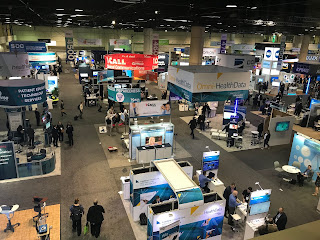I know we have mentioned art in the past, but we do not want to overshadow art with our emphasis on Science, Technology, Engineering, and Mathematics, or STEM, Education. I personally like adding the A for Art and making it STEAM Education!
This is a topic that has been historically contentious. Some scientists feel that science has a specific and unrelated purpose as some artists feel the same about art.
Everyone's favorite Science Guy, Bill Nye, agrees that art is just as necessary as science and that science must not come at the exclusion of art (Hey, 2016). Although, in the interview referenced here, Bill does have a more science-focused view and sees science as what changes society the most.
On the other hand, artists can act as outside observers. Collaborative efforts will broaden creativity of both the artist and the scientist and allow for better ways to articulate scientific concepts in a non-scientific, accurate representation of the information (Stevens & O'Conner, 2017). Art may actually be a separate, but necessary aspect of science that allows for greater comprehension. Creativity in any form is a stepping stone to greater knowledge, regardless of the subject.
So my ask for this week is if you are a scientist, reach out to an artist to help you communicate your views in a fresh way to engage new audiences. If you are an artist, reach out to a scientist and provide your vision on technical concepts and see how that broadens your world for new mediums of work. Science can enhance art, and art can enhance science.
Please continue to encourage the learners in your life to embrace Science, Technology, Engineering, and Mathematics, but also let the Artist tendencies to show through!
STEM Education is now STEAM Education!
 |
| Bizarre Lego Channel - STEM Education Rocks! |
Hey Bill Nye! Is art as important as science? (2016, February 29). Big Think. Retrieved from https://bigthink.com/videos/bill-nye-on-the-importance-of-art-and-science
Stevens, C. & O'Conner, G. (2017, August 16). When artists get involved in research, science benefits. The Conversation. Retrieved from http://theconversation.com/when-artists-get-involved-in-research-science-benefits-82147





















